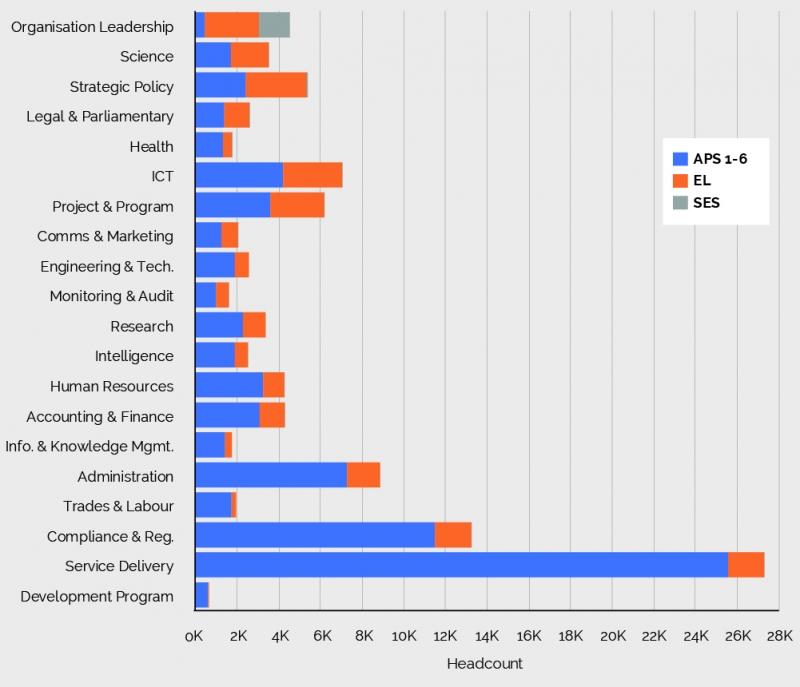Chapter 7: APS Job Family Model
The APS Job Family Model groups job roles into related functions performed within the APS. Job family data is collected by the APSC and collated in the APS Employee Database. As at 31 December 2019, data relating to job families had been provided for 78% of APS employees covered in this report. More information about the APS Job Family Model can be found on the APSC website.
Figure 7.1 shows the number of employees by APS job family and classification group. Service delivery is the most common job family (25.9% of APS staff), with the overwhelming majority of employees engaged at the APS Level. This is followed by compliance and regulation (12.5%), administration (8.4%) and ICT (6.7%). Higher numbers of EL employees are in the strategic policy, ICT, research and organisational leadership families. SES employees reside almost exclusively within the organisational leadership job family.
Figure 7.1 Headcount of employees by APS job family and classification group, 2019

Remuneration by APS job family
Based on the 2019 remuneration data the highest paid job roles within the APS are:
- organisational leadership management positions
- science, strategic policy or legal and parliamentary professionals.
In some instances, the highest paid roles will account for the maximum Base Salary figure for the relevant classification and will be outside of the typical pay band.
Figure 7.2 shows the median Base Salary, Total Remuneration Package (TRP) and Total Reward (TR) by APS job family. Median salaries are highest for the organisational leadership, science and strategic policy job families which include a range of high level and highly skilled roles. This is consistent with a greater number of staff at higher classification levels being employed within these job families as shown above in Figure 7.1. Higher remuneration in a job family typically indicates higher classification levels are employed within that job family.
Figure 7.2 Median remuneration by APS job family, 2019




